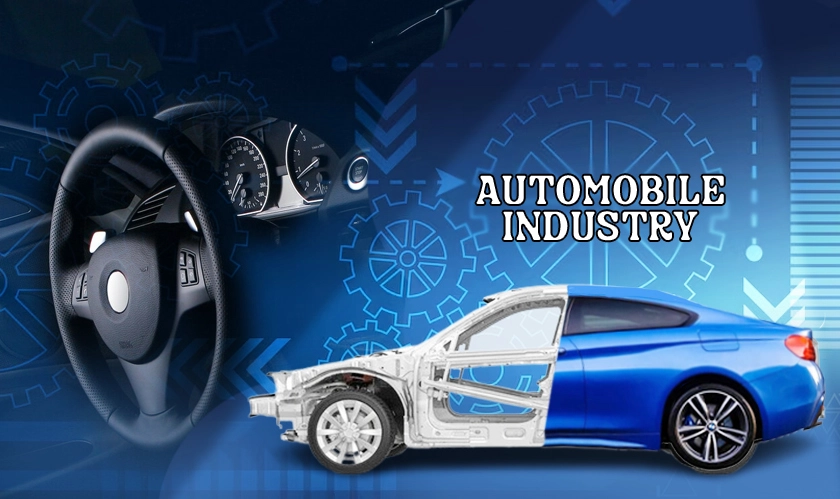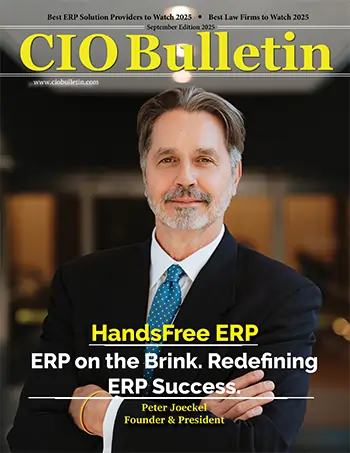Home Industry Automobile Why the automobile industry is...
Automobile

CIO Bulletin
16 May, 2024
The automobile industry stands as a testament to human ingenuity and progress, symbolizing mobility, freedom, and economic prosperity. Operating within the framework of an oligopoly, this industry is characterized by a small number of dominant firms exerting significant influence over market dynamics. Within this intricate web of competition and cooperation, various factors converge to shape the industry's landscape.
Firstly, delving into the historical evolution of the automobile industry reveals a rich tapestry of innovation, entrepreneurship, and industrialization. Pioneers like Karl Benz, Henry Ford, and others laid the groundwork for mass production techniques, revolutionizing transportation and paving the way for the modern automotive era. Their contributions not only shaped the physical infrastructure of roads and highways but also established a cultural and economic foundation that continues to resonate today.
Economically, the automobile industry is subject to a complex interplay of supply and demand forces, influenced by factors such as consumer preferences, technological advancements, and regulatory frameworks. Market concentration, a hallmark of oligopolistic markets, is evident as a handful of major manufacturers dominate global production and distribution networks. Entry barriers, including high capital requirements, stringent safety standards, and intellectual property rights, further solidify the market power of established players while deterring potential challengers.
Brand strategies play a pivotal role in shaping consumer perceptions and market positioning within the automotive industry. Established brands invest heavily in research and development, design innovation, and marketing campaigns to differentiate their products and cultivate brand loyalty among consumers. This emphasis on brand identity and reputation fosters long-term relationships with customers, driving repeat purchases and market share growth.
Moreover, technological innovations serve as catalysts for change within the automotive landscape, driving advancements in vehicle performance, safety features, and environmental sustainability. From electric vehicles to autonomous driving technologies, manufacturers continually push the boundaries of innovation to meet evolving consumer demands and regulatory standards while staying ahead of competitors.
The automobile industry's oligopolistic structure reflects a complex interplay of historical legacies, economic forces, brand strategies, and technological advancements. By unraveling these intricacies, stakeholders can gain deeper insights into the dynamics of this vital sector and navigate its challenges and opportunities more effectively.
Historical Evolution
Karl Benz and Henry Ford, among other visionaries, pioneered mass production techniques and revolutionized transportation, shaping the modern automobile industry. Their contributions established a foundation of innovation and industrialization that persists to this day. By streamlining production processes and making automobiles more accessible, they transformed society's mobility and economic landscape. The principles they introduced, such as assembly line manufacturing and affordable pricing, continue to influence industry practices, contributing to the oligopolistic nature of the automotive market.
Economic Forces at Play
Market concentration is a defining characteristic of the automobile industry, with a small number of major manufacturers dominating the market. These manufacturers, often referred to as the "Big Players," wield significant influence over pricing, product offerings, and industry trends. Their dominance is further reinforced by formidable entry barriers that pose substantial challenges for new entrants.
One of the primary entry barriers is the high capital requirements associated with establishing an automobile manufacturing operation. Building manufacturing facilities, investing in research and development, and setting up distribution networks require substantial financial resources. This high capital investment acts as a deterrent for potential new entrants, limiting the number of players in the market.
Additionally, stringent regulatory requirements pose another significant barrier to entry. Automobile manufacturing is subject to a wide range of regulations, including safety standards, emissions regulations, and environmental requirements. Complying with these regulations requires substantial time, expertise, and financial investment, making it challenging for new companies to enter the market.
This concentration of power has significant implications for market dynamics. Established manufacturers have the ability to influence industry trends, set prices, and dictate product specifications. They also have greater bargaining power with suppliers and distributors, allowing them to negotiate favorable terms and maintain their competitive advantage.
Product Differentiation and Brand Loyalty
In the fiercely competitive automobile market, brand differentiation serves as a linchpin for attracting and retaining consumers. Major automobile manufacturers allocate substantial resources to product innovation, design, and marketing endeavors, aiming to carve out distinct identities that resonate with consumers. By offering unique features, superior quality, and compelling branding, these companies cultivate strong brand loyalty among consumers. This loyalty translates into repeat purchases and enduring market share, as customers develop trust and affinity towards their preferred brands. As a result, brand differentiation stands as a pivotal strategy in navigating the competitive landscape of the automobile industry.
Market Interdependence and Collusive Behavior
Strategic interactions and collusive behaviors often underlie seemingly competitive relationships among major players. Despite outward competition, these companies engage in tacit agreements and coordinated actions to manipulate pricing strategies, influence supply chain decisions, and control market dynamics. Through subtle collaborations and strategic maneuvers, they aim to maintain market stability and enhance profitability, leveraging their collective influence to shape industry trends and outcomes. This interdependence among key players highlights the intricate web of relationships that define the competitive landscape of the automobile sector, where collaboration and competition coexist in a delicate balance.
Technological Advancements and Innovation
Technological advancements and innovation are paramount for staying competitive and meeting evolving consumer needs. From enhancing safety features to improving fuel efficiency and sustainability, cutting-edge technology drives continuous progress across the sector. Established manufacturers and emerging players alike prioritize research and development to pioneer new technologies, ensuring their products remain at the forefront of innovation. By embracing technological advancements, companies not only meet regulatory standards but also exceed consumer expectations, setting new benchmarks for performance, convenience, and environmental responsibility in the ever-evolving automotive landscape.
Conclusion
The oligopolistic structure of the automobile industry is deeply rooted in its historical evolution, economic complexities, brand differentiation strategies, and technological innovations. From the pioneering efforts of visionaries like Karl Benz and Henry Ford to the modern-day advancements in safety and sustainability, a multitude of factors have converged to shape the industry's landscape.
The high barriers to entry, driven by substantial capital requirements and stringent regulatory standards, create a formidable environment for potential new entrants, reinforcing the dominance of established players. Furthermore, the fierce competition among major brands necessitates continuous investment in product differentiation, marketing, and innovation to maintain market share and consumer loyalty.
Despite the appearance of competition, strategic interactions and collusive behaviors among industry giants underscore the interdependent nature of the market, influencing pricing decisions and overall market stability.
Moving forward, stakeholders in the automotive industry must remain vigilant and adaptable in the face of evolving consumer preferences, technological advancements, and regulatory landscapes. By understanding and navigating these complexities effectively, industry participants can position themselves for success in the dynamic and competitive automotive market of the future.
FAQs
1. How has historical pioneers like Karl Benz and Henry Ford influenced the structure of the automobile industry today?
Pioneers like Karl Benz and Henry Ford revolutionized mass production and accessibility, shaping today's automobile industry through innovative manufacturing techniques and widespread adoption of automobiles.
2. What are the primary barriers to entry for new companies attempting to enter the automobile manufacturing market?
High capital requirements, regulatory hurdles, and economies of scale present significant barriers to entry for new companies in the automobile manufacturing market.
3. How do major automobile brands differentiate their products to create brand loyalty among consumers?
Major automobile brands invest in product innovation, design, and marketing to differentiate their offerings, fostering brand loyalty among consumers through unique identities and customer experiences.
4. What role do strategic interactions and collusive behaviors play in shaping the competitive landscape of the automobile industry?
Strategic interactions and collusive behaviors among major players influence pricing strategies, supply chain decisions, and market dynamics, shaping the competitive landscape of the automobile industry.
5. In what ways do technological advancements drive innovation within the automobile industry, and how do established players respond to disruptive innovations from new entrants?
Technological advancements drive innovation in safety, efficiency, and sustainability within the automobile industry. Established players invest in research and development to stay ahead of disruptive innovations from new entrants, maintaining their competitive edge.







